Nattakorn Maneerat
Co-produced with Beyond Saving
Odds are, you are familiar with the poem “If-” by Rudyard Kipling, which starts:
If you can keep your head when all about you
Are losing theirs and blaming it on you,
If you can trust yourself when all men doubt you,
But make allowance for their doubting too;
As investors, this is a mantra we should live by. From time to time, the market loses its head. The S&P 500 is now down 25% from highs. We saw it in late 2008. The S&P fell more than 25% by October and continued to crash by over 50%. It recovered and went on to reach new heights. Twelve years later, an investment from January 2008 had more than doubled for those who remained calm and held through the crash.
Then it happened again… In March 2020, the S&P crashed by over 30%. Again, it recovered. Those who held to January 2022 saw their portfolios increase by over 47%.
Today, the S&P 500 is down about 25% year to date. Everywhere I look, investors are losing their minds, as if prices will never recover. This is a bit like freaking out when the sun sets – as if it will never return. If there is one thing we should learn from the history of stock market crashes, it recovers and goes on to new heights.
Yet every time people see their portfolios down 20, 25, 30%+, they panic. Many will sell, realizing their losses and making them permanent. Everywhere I look, I see people losing their heads. Don’t be one of them.
Now I don’t know if the market will bottom at 25% down or 30% down. It could fall to 50% down or even more. It could start its recovery tomorrow. One thing I have learned in my years is that those around me are usually the most pessimistic about the future on the day that the rally starts.
Those who can keep their eye on the big picture will outperform in the long run. Those who join the panic and sell at low prices will not. Keep your head when everyone else in the market is losing theirs. If you feel like you can’t, take a break. Just walk away. Don’t look at your portfolio, you don’t have to. Turn on the DRIP and take a vacation, it will be here when you get back.
Trust Yourself
“If you can trust yourself when all men doubt you.”
A mistake that many investors make is that they accept stock market prices as Truth. If their neighbors in the market are offering lower prices, they call an investment “bad.” I hear things like:
“This investment is down 40%, it’s a bad investment.”
“The price is down x%. What’s wrong?”
They’ll describe it as a “bad company.” Well, Amazon (AMZN) is currently down 40% from highs. Alphabet (GOOG, GOOGL) is down 35%. Netflix (NFLX) is down nearly 70%. Meta Platforms (META) is down over 60%. Even Apple (AAPL) is down 20%. Are these “bad” companies run by a bunch of incompetents? Of course not. These are the companies of FAANG that have driven much of the stock market’s growth over the past 20 years. Maybe they were overpriced. Maybe they are underpriced now. These companies will continue to be a major part of our daily lives and major participants in the U.S. economy.
When investing, we must not rely on our neighbors to value our investments for us. They have an utterly terrible track record of identifying long-term value, especially in times of turmoil. Those who were selling in October 2008 or March 2020 were simply flat-out wrong. Sure, they might have been “right” in that prices went down lower in the following weeks or months, but in the big picture, the valuation of most companies was well below what they would prove to be worth over the years. Yet those who were selling were more eager than those who were buying.
You need to determine what your investments are worth to you. And don’t sell them for less than that. Buy more when the price is lower.
Question Yourself
“But make allowance for their doubting too.”
Of course, you do want to ask yourself questions. Often, market selloffs are caused by macro events. The main culprit of this sell-off is the Federal Reserve remains committed to higher rates. This is creating a risk of recession in the future and will put a strain on certain parts of the economy.
You might want to shift your allocations to take advantage of macro realities. You might want to increase exposure to floating rate investments like BDCs, CLO funds, and commercial mortgage REITs. These companies directly benefit from higher interest rates because they invest in floating rate assets. However, they are also exposed to “credit risk,” meaning that they rely on borrowers to be able to pay back loans.
Our opinion at HDO is that corporate borrowers are generally in healthy shape to be able to pay back existing loans. We don’t see a lot of borrowers that are overly stretched because most companies spent the pandemic shoring up their balance sheets and increasing their liquidity. We believe that defaults will be relatively low even if there is a recession. This is an argument I’ve been laying out in my Market Outlooks, and I encourage you to arrive at your own conclusion. I’m right a lot, but I’m not right 100% of the time. Nobody is.
To offset the risk of a recession, you likely want to increase your exposure to fixed-rate investments. Preferred shares, baby bonds, and traditional bonds can all provide your portfolio with stable income through a recession. I also like having exposure to utilities and agency mREITs like NLY or AGNC, which have historically been countercyclical, rising during recessions.
As income investors, our primary concern is not the price of a stock on a given day. We are not sellers, we are always net buyers of stocks. So we want to constantly question whether changing conditions will put our dividends at risk. The good news is that the pressures of this selloff are valuation driven, not driven by the fundamentals. Fundamentally, the companies we are invested in likely have higher earnings this quarter than last quarter. Earnings are climbing, it’s the market’s valuation of those earnings that is declining.
What Should You Buy?
One of the most frequent questions I get asked is “what should I buy?” It might be tempting to rush in and buy the highest-yielding picks. Periods like this, it can become easy for investors to become overweight on a handful of picks.
Do not lose sight of the overall strategy and goals.
Our strategy is:
- Invest 40%+- in fixed-income like fixed-income CEFs, preferred equity, and bonds. This number can be higher or lower depending on how conservative you wish to be.
- Focus on investments with sustainable yields over 6%. With our Model Portfolio yielding north of 10%, this goal is easily achieved.
- Maintain sector diversification.
- Diversify individual holdings with no more than 2-5% in any one pick.
- Make exchanges when they increase our income and maintain the above requirements.
When prices were high, options for achieving our yield targets were limited. When prices are low, they are plentiful.
Now, with everything going down, many of those picks that you might have wanted to invest in but passed up due to a high price are more attractive. While it might be tempting just to buy the highest yield, that would be a reactive mistake. A bear market is an ideal time to rebalance our portfolio and ensure that we are within our targeted allocation levels. It is an ideal time to diversify and pick up shares in companies that were previously too expensive.
So what should you buy? That really depends on where you are and where you want to go – focus on your long-term goal. If you are following the HDO Model Portfolio, focus on the picks you don’t hold or those that you are underweight in. Now is the time to add the areas that your portfolio is lacking.
Take Your Time
Investing isn’t a race. Many of you started in your 30s or 40s, which means your investing career could be 30-50 years or even longer. In the grand scheme, these market crashes make up a relatively short period of your investing experience. You will have many more bullish years than bearish ones.
Investors are often tempted to “back up the truck.” The problem is, you don’t know where the bottom will be. It could be now, it could be next month, or we might not see the bottom for another 6 months.
Keep in mind, while the past two weeks have been rough on Value stocks like we hold in the HDO Model Portfolio, year-to-date they are still holding up much better than the rest of the market.
The pain we are feeling now is about half as much as Growth investors are feeling. A lot of investors are feeling significant pressure, and this is a bit different from March 2020, where the downside was strong but also very brief. Many Growth investors have been down more than 20% for most of the year and are now seeing it worsen. The longer pressure continues, the more likely that investors will “throw in the towel,” and that often means selling ETFs which hold both Growth and Value stocks.
Therefore, even though Value stocks might have good fundamentals and are trading at attractive valuations, the sheer pressure on Growth stocks is contagious. When an investor sells an ETF, that ETF then sells everything in its portfolio. With the indexes testing June lows, it becomes likely that if that floor breaks, we’ll see another leg down in everything. If it holds, we could see recovery begin.
In short, just because prices are very low and it is attractive to buy today, it is still possible that prices come down even more. Possibly significantly more. Therefore, you need to be mentally prepared for that possibility with each purchase.
In the next week, we have a lot of dividends coming into our portfolio since the end of the month and the first of next month are two of the most popular payment dates for dividends. Take your time and put an action plan in place.
- Check Your Allocations: Which types of investments and which sectors is your portfolio lacking? Those are the types of stocks you want to look for first.
- Build Your Wishlist: Which stocks have you looked at but passed up due to price? Which stocks do you have the smallest allocations in? Create your wish list so that when you get your dividends, you can start checking prices and buying what you want. Need ideas? Our weekly picks are the best source for up-to-date information on the picks the HDO team is buying.
- Set Your Targets: The market is trending down, and prices are falling. Don’t be afraid of setting limit orders below current prices. You can look at the fall in June or even see how far a stock fell in March 2020. At what price will you be at peace buying a stock, even if the price keeps falling? Think about it and write it down on your wish list.
- Buy Slowly: The next big dividend period will be the middle of October. So figure out how much you intend on investing/reinvesting and break it up into smaller bites so that you can buy over many days instead of just “backing up the truck” in one day. What is cheap today very well might be cheaper tomorrow. With most brokers now charging no commissions, there’s no cost advantage of buying 10,000 shares over one share. Investors can utilize this to buy in small pieces, averaging in over a period of time.
We recommend reinvesting 25% of all your dividend income. As dividends come in, you’ll have a source of constant cash flow to reinvest a little more every month. You won’t be buying everything on the precise day that the bottom comes in, but if you reinvest in small bites and have dividends coming in frequently, you will likely buy some shares at the bottom.
iStock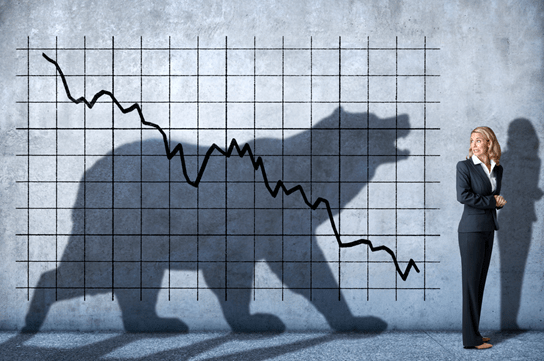
Conclusion
“If you can keep your head when all about you
Are losing theirs and blaming it on you.”
By remaining calm when the market is panicking around us, we can identify true value opportunities. If the market insists on valuing dividend stocks at super low prices, buy them!
Our income continues to come in as expected. In fact, we’ve seen several dividend hikes over the past few months. We’ve seen 35 dividend hikes or special dividends declared year-to-date in our portfolio. The changing economic conditions are generally favorable for the earnings of the companies we hold. We’ll continue to review conditions in our Weekly Picks and Market Outlook to ensure this continues.
We are completely confident in our picks and the underlying analysis that led us to choose them. We will not sell them simply because the price has declined while our original investment remains intact. Now is the time to look at our portfolio, determine which sectors we want more exposure to, and find great deals that will increase our income.
A dropping market is not a threat for income investors, it’s an opportunity to invest our capital at higher yields and rebalance our portfolios. By keeping calm and being deliberate in our decisions, we can turn panic into growing income.


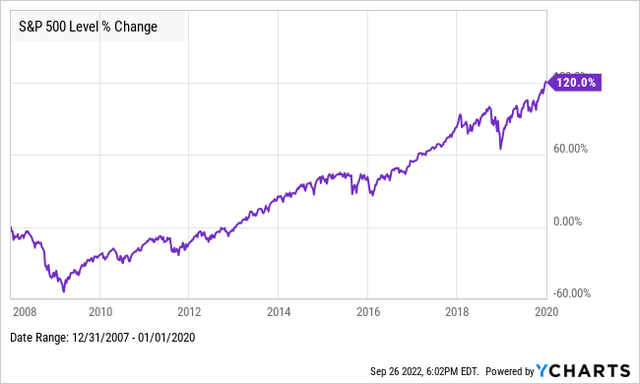
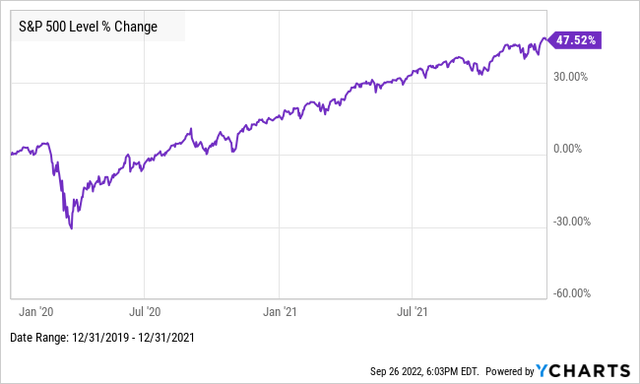
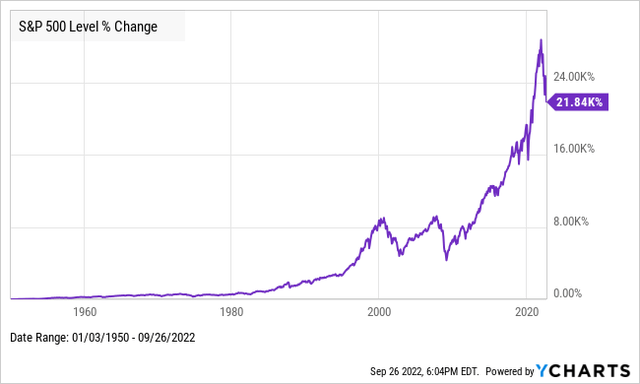
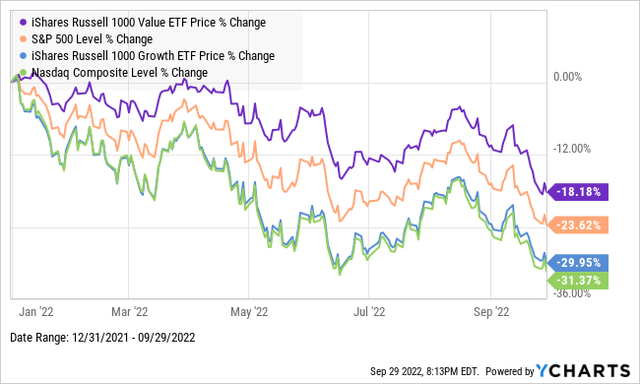
Be the first to comment